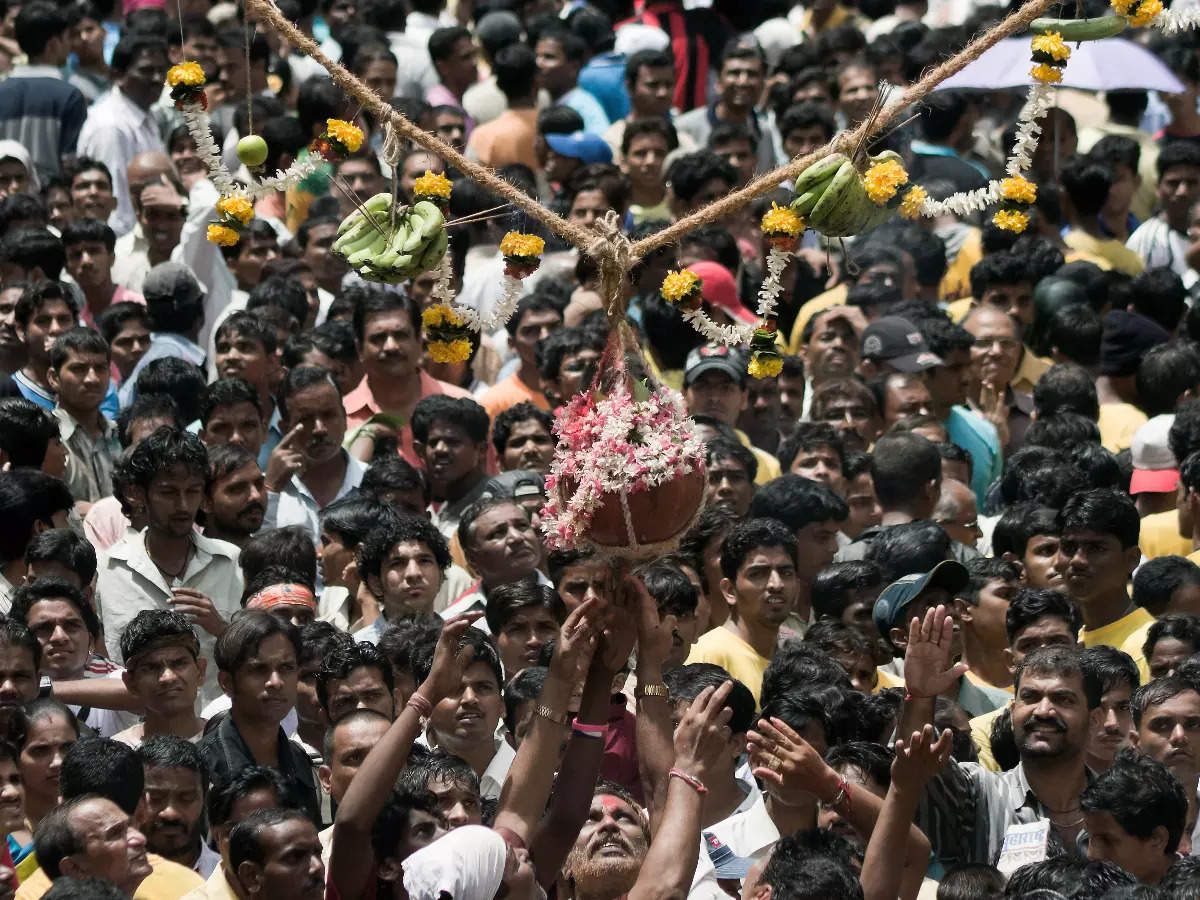
Dahi Handi is celebrated every year on Krishna Janmashtami. This year it will be celebrated on August 30th. This festival is mainly celebrated in the states of Gujarat and Maharashtra. In this, an earthen pot is filled with curd or butter and hung at a height. A group of men and women, form a human pyramid to break the earthen pot. It is majorly a competitive event. And while this is done, people surround the group and play music to cheer the competitors.

It is a public spectacle, and an old tradition. More recently, Dahi Handi was lavished with media coverage, prize money and commercial sponsorships.
The significance of Dahi Handi is based on the legend of lord Krishna. He was also known as butter thief or Makhan chor. As a child, Krishna was very mischievous and was really fond of butter. Therefore he along with his group of friends used to steal butter from their neighbours. Those people would hang their earthen pots high so that Krishna can't reach there, but he being a smart kid used to form a human pyramid and steal all the butter.
Over the years, Dahi Handi has become a ritual of Krishna Janmashtami. The ritual imitates Krishna's childhood days. The group of boys are called mandals and they go around different localities to break the handi. Often there is also a price to break the pot and has become a fun way to celebrate the festival. The lower tiers have sturdy people who can bear the weight on their shoulders, and the top one has an energetic child who can catch and break the handi. The people who form the pyramid are called ‘Govinda Pathak’ or ‘Govinda’.
The handi is placed around 30 feet or 40 feet from the ground. Various teams compete to form the highest pyramid and crowds cheers them, gathers in the ritual with the same spirit.
What does ‘Dahi handi’ actually contain? In places like Gujarat & Dwaraka, the earthen pot is filled with items that are Krishna’s favourite, like yoghurt, almonds, ghee and nuts!
It represents the life and deeds of a young Lord Krishna. People practice one week or so before the actual event. In this ritual, human pyramids are formed with focus, energy, enthusiasm, and dedication. It is said that one pyramid can have as many as nine layers. In the lower tiers, sturdy people are kept who can bear the weight on their shoulders and on the top has an energetic child who can catch and break the Handi.
People from Andhra Pradesh and Telangana celebrate this festival as Utlotsavam. This is organized at the famous Tirupati Venkateswara temple, and is celebrated a day after Janamashtami. The processional deities of Sri Krishna Swamy and Sri Malayappa Swamy are taken in a procession around the temple to the place just in-front of temple where Utlotsavam is performed. The deities watch the sport being played by local youth who will be divided into groups to grab the Utti.







